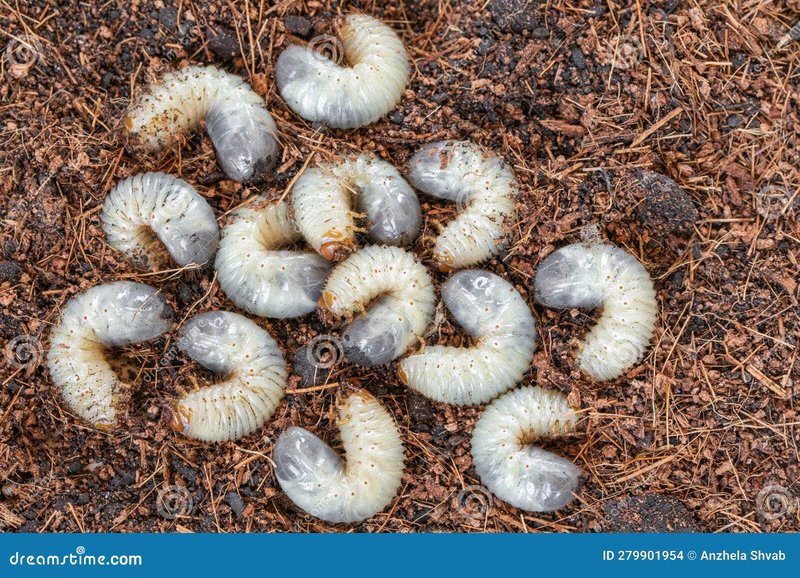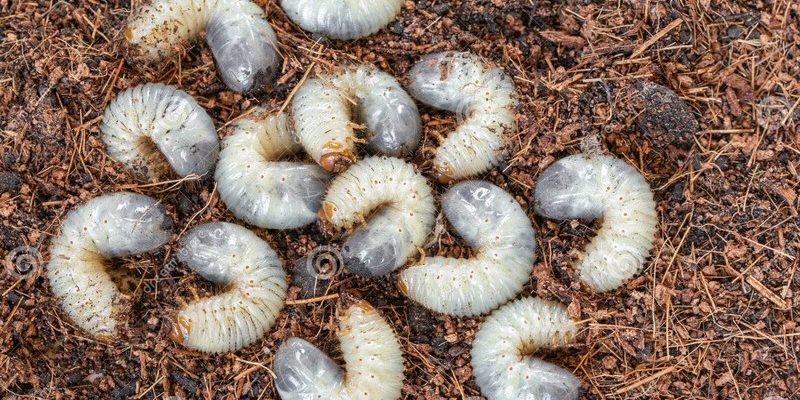
Imagine beetles as the unwelcome delivery people in your garden. They show up, drop off their “packages” (think of grubs) and leave chaos in their wake. Understanding which beetles are responsible for grubs can help you take the necessary steps to protect your yard from these lawn invaders. Whether you’re a diligent gardener or just a homeowner wanting to keep your yard green, knowing this connection is crucial.
Understanding Grubs and Their Lifecycle
To tackle the beetle issue, let’s first understand what grubs are and how they fit into this picture. Grubs are the larval stage of certain beetles, primarily **June bugs** and **chafer beetles**. These little white larvae live underground, feasting on roots, which can lead to dead patches on your lawn. Think of it as the ultimate plant snack party.
Grubs go through a lifecycle that starts with a beetle laying eggs in your soil, usually during late spring or early summer. The eggs hatch into grubs, which munch away at your grass roots for several months. By the time autumn rolls around, these grubs are fat and ready to burrow deeper into the ground to survive the winter, where they transform into adult beetles to start the cycle all over again. The whole process can feel like you’re stuck in a never-ending horror movie, but understanding it can help you break the cycle.
Which Beetles Are Behind the Grub Infestation?
So, let’s get to the heart of the matter. The major beetles responsible for grubs are **Japanese beetles**, **June bugs**, and **European chafers**. Each has its traits and preferred methods of destruction.
- Japanese Beetles: These metallic, shiny green beetles love dining on many plants and flowers, but they also lay eggs that become grubs. They tend to be more common in the eastern United States.
- June Bugs: Typically brown and quite plump, June bugs are most active at night. They lay their eggs in moist soil, making them another familiar source of grubs.
- European Chafers: Similar to June bugs, these beetles are a bit smaller and light brown. They often show up in lawns, causing significant damage as their grubs develop underground.
Knowing which beetles are responsible for grubs can help you tailor your approach to managing them effectively.
How to Identify Beetles and Grubs
Recognizing these beetles and their grubs is essential in your fight against lawn devastation. Adult beetles tend to be easier to spot. For instance, *Japanese beetles* are known for their distinct metallic sheen and the way they lazily fly around aiming for that flower patch you’ve worked so hard on.
On the other hand, grubs are less conspicuous, hiding just below the soil surface. They are typically about an inch long and have a C-shaped body. If you’ve got a suspected grub problem, you might want to dig a small hole in your yard. If you see white, curled-up larvae, it’s time to take action.
Look for signs like:
– Brown patches on grass
– Increased birds or animals digging in your yard (they’re after the grubs!)
– A spongy feel when you walk on the grass
Taking the time to identify these critters can make a big difference in how you address the problem.
What Attracts Beetles to Your Lawn?
You might be wondering, “How do these beetles find their way to my yard in the first place?” The answer lies in several factors that make your lawn inviting for them.
First off, beetles are attracted to **moist, healthy soil** where they can lay their eggs. If your lawn is well-watered and healthy, it might be a prime location for a beetle nest. The presence of flowers and plants that beetles love can also draw them in. Think of it like setting up a buffet feast for them.
Another factor is **light**. Adult beetles are often attracted to lights at night, so leaving outdoor lights on can inadvertently invite them to your property. Plus, if your neighbors have a beetle problem, there’s a chance they could wander into your yard, too!
How to Control Beetles and Grubs
Now that we understand which beetles are responsible for grubs and why they’re attracted to your yard, let’s discuss how to combat them. Here are some effective strategies:
1. **Natural Predators**: Birds, beneficial nematodes, and other insects feast on grubs. Encouraging these natural predators can help keep grub populations in check.
2. **Milky Spore**: This is a natural bacterium that targets grubs. Applying it can help eliminate them over time, without harming other beneficial insects.
3. **Pesticides**: If necessary, there are chemical treatments available designed specifically for treating beetles and grubs. Make sure to follow instructions carefully!
It’s worth noting that not all treatments are suitable for every lawn. Consider your yard’s unique characteristics—what works for one may not work for another.
Preventing Future Infestations
Once you’ve tackled the current issue, the goal is to prevent future beetle invasions. Here are some tips:
– **Maintain Healthy Soil**: Regularly aerate and fertilize your soil. A healthy yard is less likely to attract beetles.
– **Monitor and Manage Watering**: Overwatering can create a perfect environment for grubs. A well-drained lawn is less inviting to beetles.
– **Regular Lawn Maintenance**: Keep your grass at a healthy height. Dethatching and mowing regularly can help as well, making it less appealing to beetles.
By being proactive, you can greatly reduce the chances of grubs reappearing.
Understanding which beetles are responsible for grubs is crucial for any lawn enthusiast. Armed with this knowledge, you can confidently tackle the problems these pests bring. From identifying the beetles to knowing how to control and prevent future infestations, you’ll be well on your way to a healthier, greener lawn.
Remember, it’s all about balance. By fostering a healthy ecosystem in your yard and using the right strategies, you can keep those pesky beetles in check. Happy gardening!

